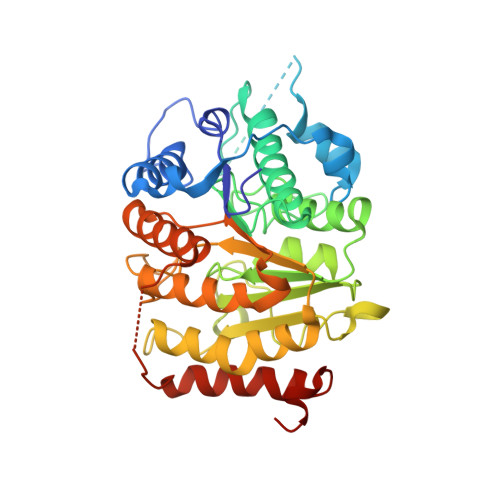Design, synthesis, and biological evaluation of potent and selective class IIa histone deacetylase (HDAC) inhibitors as a potential therapy for Huntington's disease.
Burli, R.W., Luckhurst, C.A., Aziz, O., Matthews, K.L., Yates, D., Lyons, K.A., Beconi, M., McAllister, G., Breccia, P., Stott, A.J., Penrose, S.D., Wall, M., Lamers, M., Leonard, P., Muller, I., Richardson, C.M., Jarvis, R., Stones, L., Hughes, S., Wishart, G., Haughan, A.F., O'Connell, C., Mead, T., McNeil, H., Vann, J., Mangette, J., Maillard, M., Beaumont, V., Munoz-Sanjuan, I., Dominguez, C.(2013) J Med Chem 56: 9934-9954
- PubMed: 24261862
- DOI: https://doi.org/10.1021/jm4011884
- Primary Citation of Related Structures:
4CBT, 4CBY - PubMed Abstract:
Inhibition of class IIa histone deacetylase (HDAC) enzymes have been suggested as a therapeutic strategy for a number of diseases, including Huntington's disease. Catalytic-site small molecule inhibitors of the class IIa HDAC4, -5, -7, and -9 were developed. These trisubstituted diarylcyclopropanehydroxamic acids were designed to exploit a lower pocket that is characteristic for the class IIa HDACs, not present in other HDAC classes. Selected inhibitors were cocrystallized with the catalytic domain of human HDAC4. We describe the first HDAC4 catalytic domain crystal structure in a "closed-loop" form, which in our view represents the biologically relevant conformation. We have demonstrated that these molecules can differentiate class IIa HDACs from class I and class IIb subtypes. They exhibited pharmacokinetic properties that should enable the assessment of their therapeutic benefit in both peripheral and CNS disorders. These selective inhibitors provide a means for evaluating potential efficacy in preclinical models in vivo.
Organizational Affiliation:
BioFocus , Chesterford Research Park, Saffron Walden, Essex, CB10 1XL, United Kingdom.
















